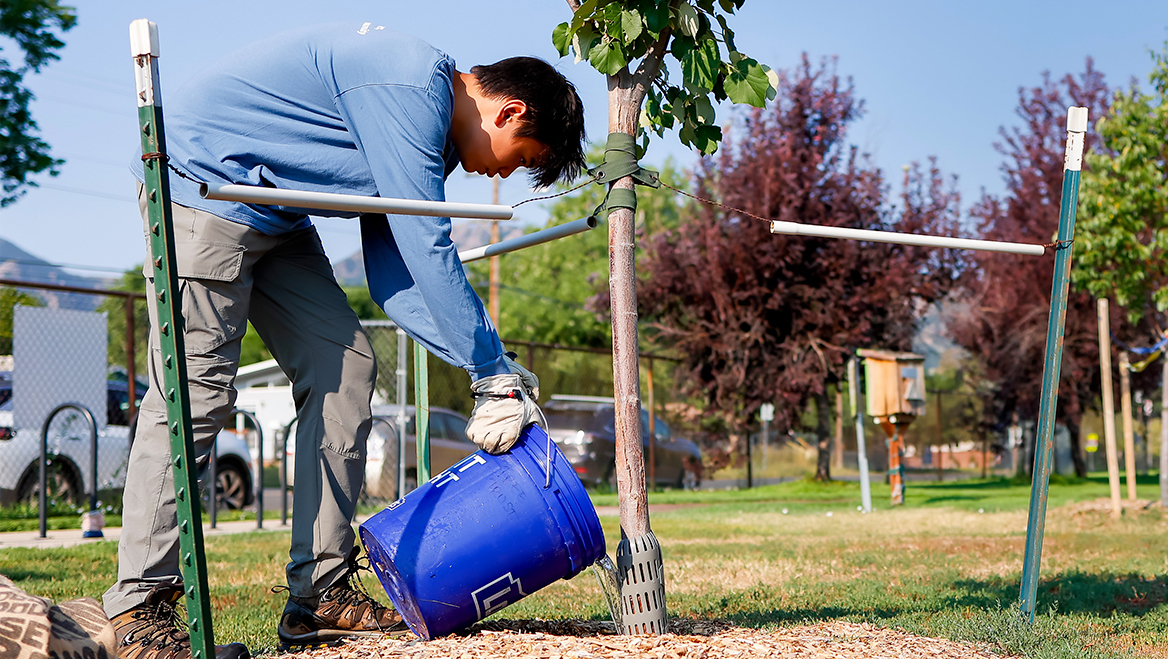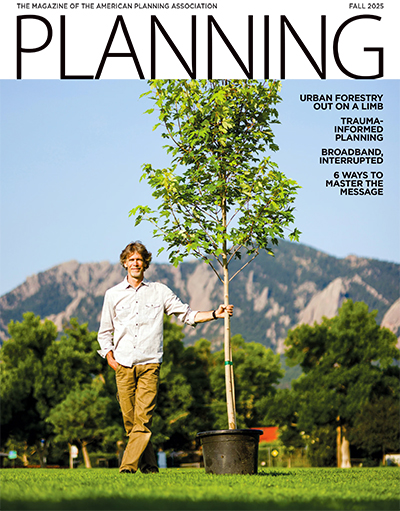Nov. 6, 2025
Urban forestry has often been siloed from broader land use and infrastructure strategies, but trees and the shade they provide can help solve a plethora of planning challenges. They shape how city spaces look, feel, and function; combat urban heat islands; clean the air; reduce stormwater runoff; and contribute to positive health outcomes for residents — exactly the kinds of outcomes that planners strive to achieve.
Your guide to growth
As federal funding for urban forestry — and planning — shrink, here are seven ways to help support and expand local tree canopies and make cities more livable.
1. Get involved
Alana Tucker, AICP, senior director at American Forests, says planners play a key role in urban forestry. "If you're a planner not currently involved in urban forestry efforts, get involved," says Tucker, who also serves as policy co-chair for the American Planning Association's Sustainable Communities Division. Tree inventories, canopy analyses, and urban forest master plans depend on planning expertise, she says.
2. Treat trees as critical infrastructure
When budgets shrink, trees are often the first cut in development projects. Sara Tillie, director of the Cleveland Tree Coalition, stresses a mindset shift. "We need to move from thinking of trees as nice-to-have to thinking of them as a must-have. Trees aren't just amenities or landscaping — they're infrastructure." She also recommends including maintenance plans and long-term care funding for trees at the outset of every project.
3. Integrate trees into planning processes
Tree canopy targets should be included in comprehensive plans, climate strategies, and housing projects, according to Tucker. "Tree inequities are a planning problem created by the history of redlining in our cities," she says, but they also present an opportunity. Integrating trees into city plans can help address environmental health, economic disparities, and community resilience. "That's why I do what I do as a planner working in urban forestry," Tucker adds. "I really see urban forests as one of the trickiest planning challenges — but solutions exist within."
4. Create land use policies with trees in mind
"Planning is everything to a successful urban forest program," says Trevor Peterson, urban forester in Butte-Silver Bow County, Montana. He highlights zoning codes, site plan reviews, and clear standards for planting conditions, species selection, and space allocation. For guidance, Peterson recommends Up by Roots: Healthy Soils and Trees in the Built Environment by James Urban. "Every planner should read it," Peterson says. "It's like the Bible of urban forestry and trees."
5. Quantify tree benefits
To secure funding and support for urban forestry efforts, planners must demonstrate measurable results. "You have to show your city council the link between heat islands and canopy gaps in your own community, not just cite an academic paper," says Brett KenCairn, a senior climate policy advisor in Boulder, Colorado. That connection will ultimately determine whether people care enough to fund natural infrastructure like trees, he adds. Tools like American Forests' Tree Equity Score and the Department of Agriculture (USDA) Forest Service's i-Tree can help map canopy gaps and measure benefits.
6. Build cross-sector coalitions
"Urban forestry doesn't fit neatly into a single department," Tucker says. "We need planning, public works, public health, and urban forestry all at the same table." Planners can lead by bringing together public works, public health, housing agencies, and workforce development offices, as well as local private-sector partners and organizations.
7. Don't wait
Like planning, planting trees is a long-term investment. "You plant today for benefits 100 years from now," says Tillie. Protecting and maintaining existing trees is just as important as planting new ones. "If you have to cut down a decades-old tree, think about how long it's going to take to replace it," she says.




